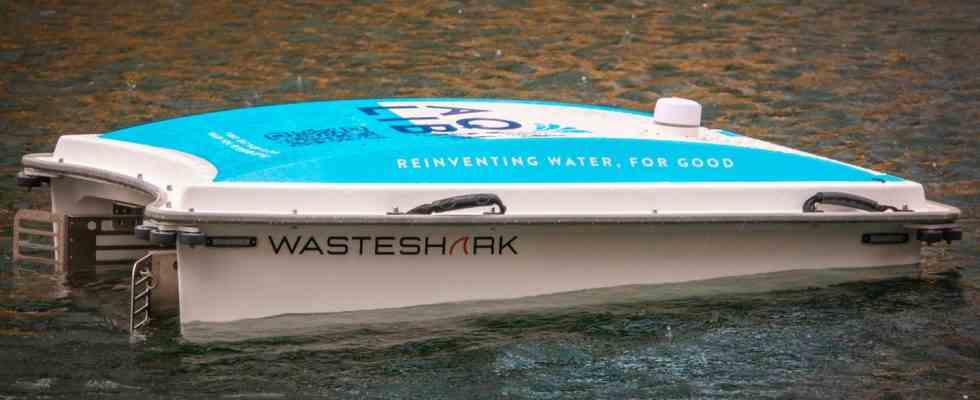Wasteshark
A shark swims in the Thames – and rids London’s waters of rubbish
Plastic, algae, other dirt: the Wasteshark collects everything that swims into its mouth.
© Ran Marine Technology
The canals of the British capital are to become cleaner. From now on, the so-called Wasteshark is used for this. This is a garbage drone modeled after the whale shark.
City canals and riverbanks are often filthy. In the past, manual work was used to remove the rubbish. With projects like the Wasteshark, a swimming drone with a big appetite, the aim is to solve the problem automatically in the future. Around 30 of these are in use worldwide – and the first Wasteshark is now also swimming through Canary Wharf in London.
Up to a ton of trash a day
The work that a single Wasteshark can do is quite remarkable. According to the manufacturer Ran Marine the autonomous device collects up to 500 kilograms of plastic and dirt every day. A trip takes between six and ten hours. Thanks to the two electric drives, the robot cannot be heard and does its work as inconspicuously as possible. After about five kilometers through its territory, the robot goes to the charging station. Optionally, this can also be expanded with a function that automatically takes the garbage out of the device.
The principle of the drone is quite simple: there is a large opening at the front that catches everything that lands in it when swimming. The speed of the drone is so slow that it is almost impossible that something that is still alive will be “swallowed” – ducks, for example.
Pepsi seller pays for the drone
While the London Shark is not the first of its kind, it is an important milestone for the manufacturer. The device in the Thames is the first drone to be paid for and operated by a company. In this case, the bill for the robot is taken over by the Britvic Group, which produces drinks such as Aqua Libra or Tango, and is a licensee for 7 Up, Pepsi and Lipton ice tea.
A fitting combination considering how many plastic bottles Britvic sells in the UK. The project takes Ran Marine as an opportunity to draw the attention of more companies to a possible cooperation.
Bad for the environment
You should ignore these seven products the next time you go shopping
According to Ran Marine, further arguments for using a Wasteshark are the numerous sensors that a garbage shark can be equipped with. This would not only allow garbage to be collected, but also continuous data on the respective body of water to be collected. A Wasteshark could thus provide information about the temperature, depth and quality of the water around the clock.
Also read:
Floating power plant floats like an air mattress in the sea – and is intended to make fossil fuels superfluous
Wind turbines on cable cars: Wind turbines should generate electricity from mountain air
Where is all that steam coming from? Weather researchers are annoyed by Starlink



